
African Spurred Tortoise
(aka the Sulcata Tortoise)
Sulcata tortoises inhabit the southern edge of the Sahara. They are the architects of their habitat: their burrows provide housing for a plethora of other animals. Unlike most other tortoises, they do not hibernate. They are the largest mainland tortoise, weighing between 70 and 100 pounds as adults, and can live up to 80 years. The species is considered vulnerable.
Both Laurie and Jim have been raising one of this kind of tortoise.
We were hungry and tired, but we couldn’t leave without seeing the tortoises. They were beyond the children’s area near the exit. We’re glad we took the time.
First we walked past some other amphibians and reptiles. Running low on the number of photos I could take, I neglected to get photos of any iguanas. And I had to enhance this offering is enhanced by some of Laurie’s photos. I apologize ahead of time for some of the blurriness.
Below, counterclockwise from the top left, are a turtle, a lizard, and a chameleon; another photo of the cover-girl(?); the bottom view of a gecko stuck to glass; another tortoise, burrowing under a shrub.
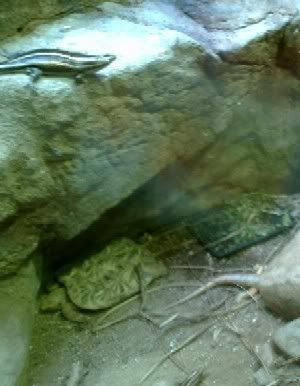 |
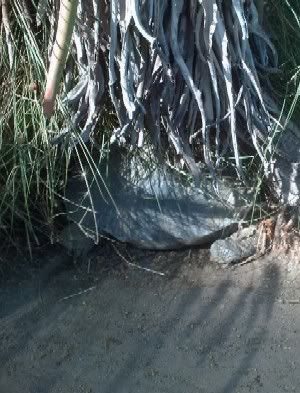 |
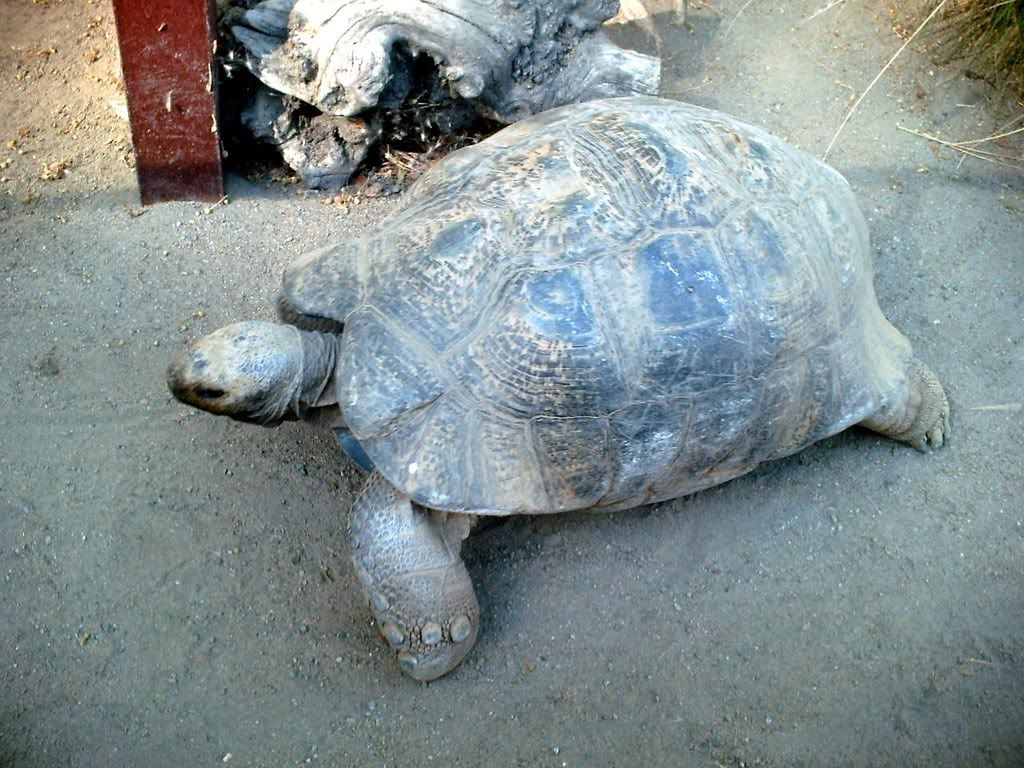 |
 |
Then we wandered across the way to the Galápagos tortoises. These guys were big! But, it turned out, not that big.
This species is considered vulnerable, with its population declining from 250,000 when the islands named after them (galápago means saddle: the Spanish explorers thought the shells of the tortoises reminded them of saddles) were first discovered to 15,000 today. Tbeir main danger arises from mammals introduced to their habit by humans. The smaller mammals (pigs, dogs, cats and rats) eat tortoise eggs and the larger ones (goats, donkeys, cattle) compete for grazing rights. And, of course, they were used as food by whalers who passed by…and they were also harvested to obtain turtle oil, which was used in preparing cosmetics.
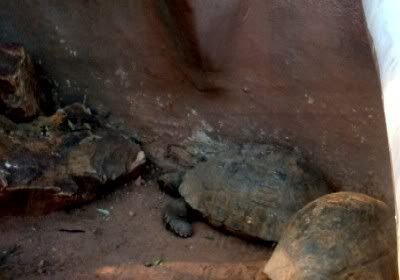 |
 |
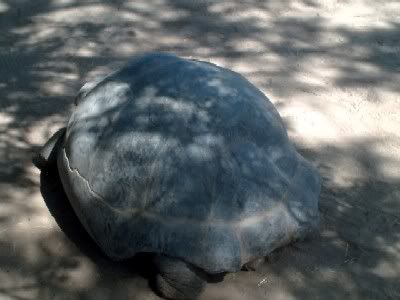 |
 |
You might notice in the bottom right photo, that there was another Galápagos tortoise pen beyond the first one. This is where the older, larger guys were.
Laurie recognized that the one on the right was sick with an upper respiratory infection. So we sought out someone to report this to and discovered a guy in safari gear who called for an expert. Everyone agreed that they must be aware of it, however.
 |
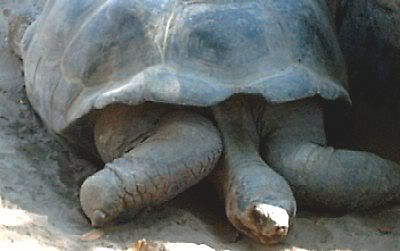 |
The dude we talked to turned out to be the ringmaster of the sea lion show in the amphitheater (the Wegeforth Bowl)…which we knew nothing about. So we hung around a took some more pictures. We were not close to the stage since there was little shade there and that was the Splash Zone.
Below on the left are a pair of blue macaws. It turned out to be impossible for us to get photos of them in flight since they were much too fast. Same with the owl.
The rest are of a couple of sea lions, which performed various tricks which we mostly failed to get photos of, such as imitations of seals and the stuff one associates with circus animals. We did get one kissing a 9 year old girl, however. 🙂
The Japanese Sea Lion has been extinct since the 1950s. The Stellar (or Northern) Sea Lion, the largest of the sea lions, is endangered. The New Zealand and Galápagos species are vulnerable. The others are doing as well as can be expected.
 |
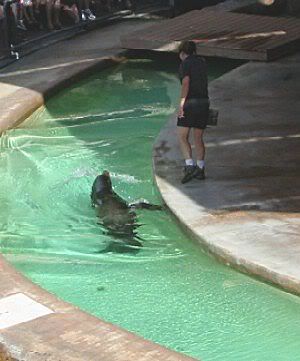 |
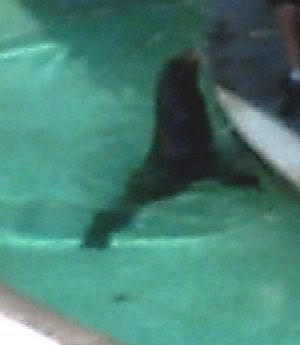 |
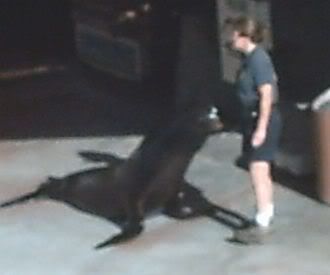 |
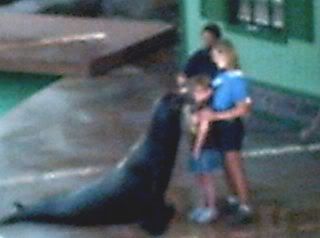 |
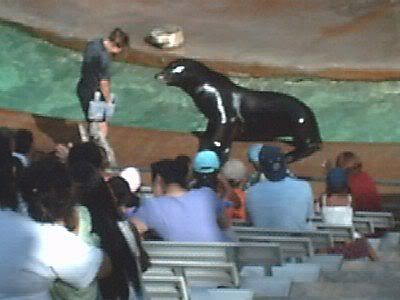 |
We drove to the harbor area for dinner. What luck! We got seated way out at the end of the pier, without a reservation, at the Fish Market Restaurant. There were tall ships in the harbor. Laurie got some photos of one of them. And I used my last photo for a sunset. The food was good also. 🙂
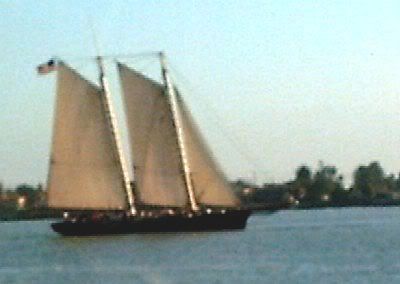 |
 |
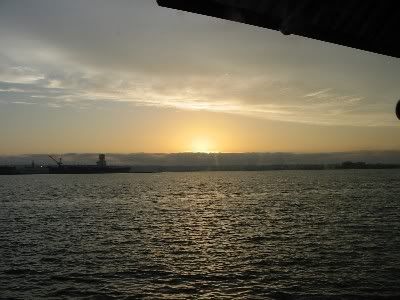

4 comments
Skip to comment form
Author
…with a group of 10 or so young people from Spain vacationing together. Two of them were young women, which was apparently a good number since no small number of the men were gay. 🙂 They had been spending most of their time in California visiting muscle beaches.
On our last day in San Diego, we visited Sea World, which is up next.
Robyn
PS: If you missed the pandas and wild cats, they appeared in Friday Philosophy.
Please do this a lot.
Thanks.